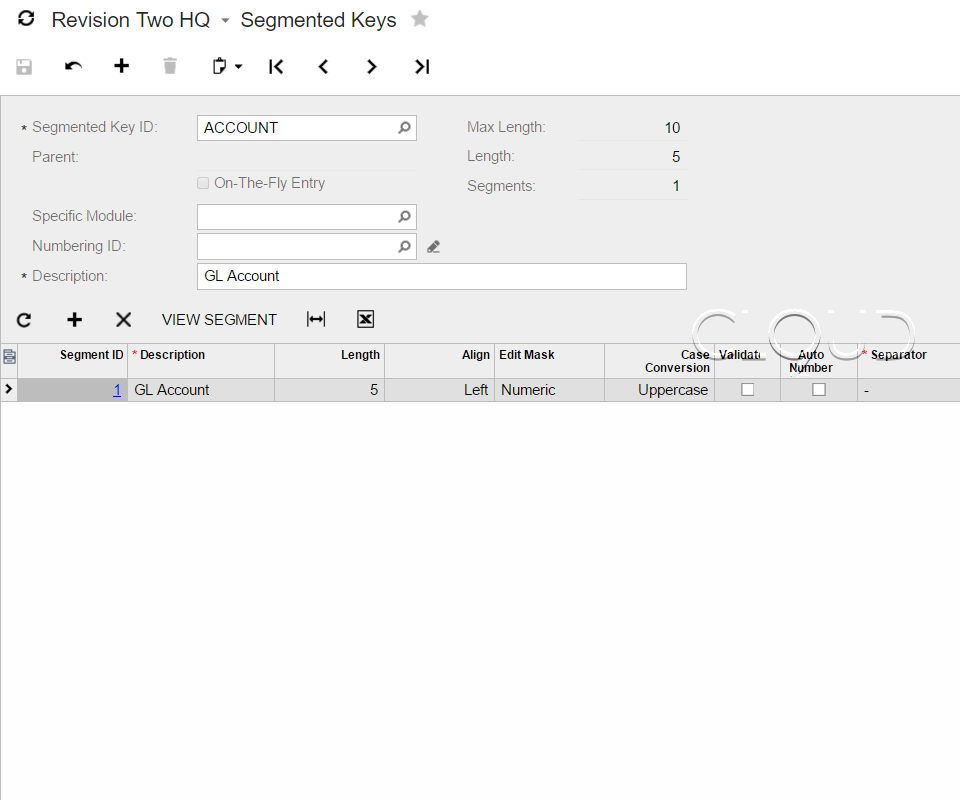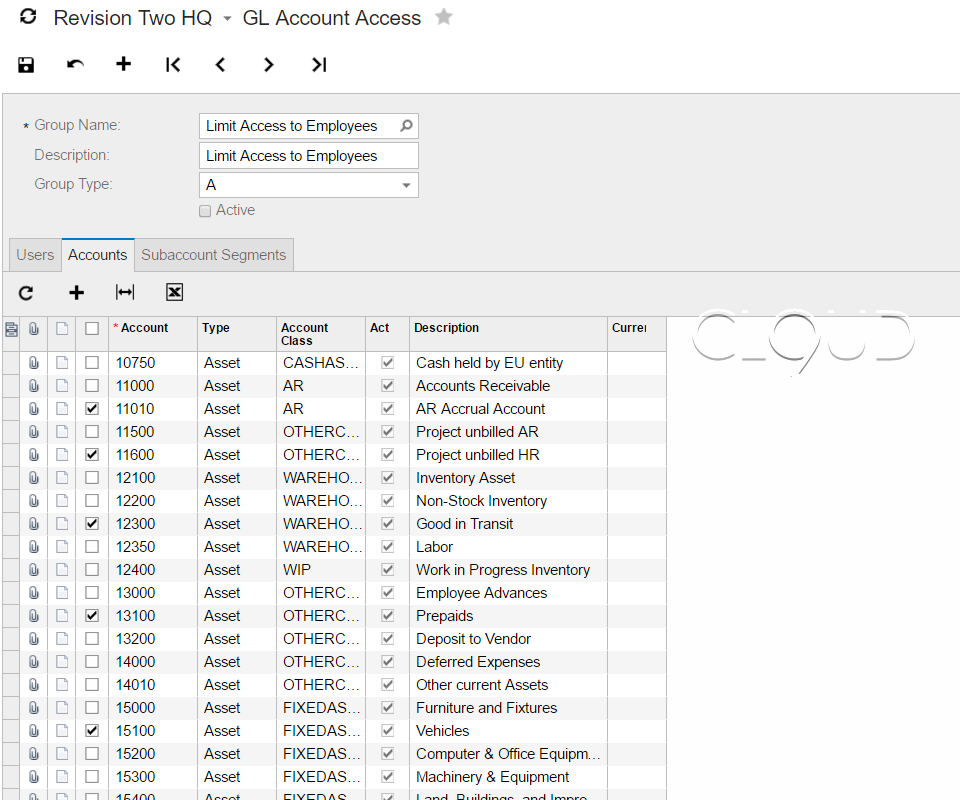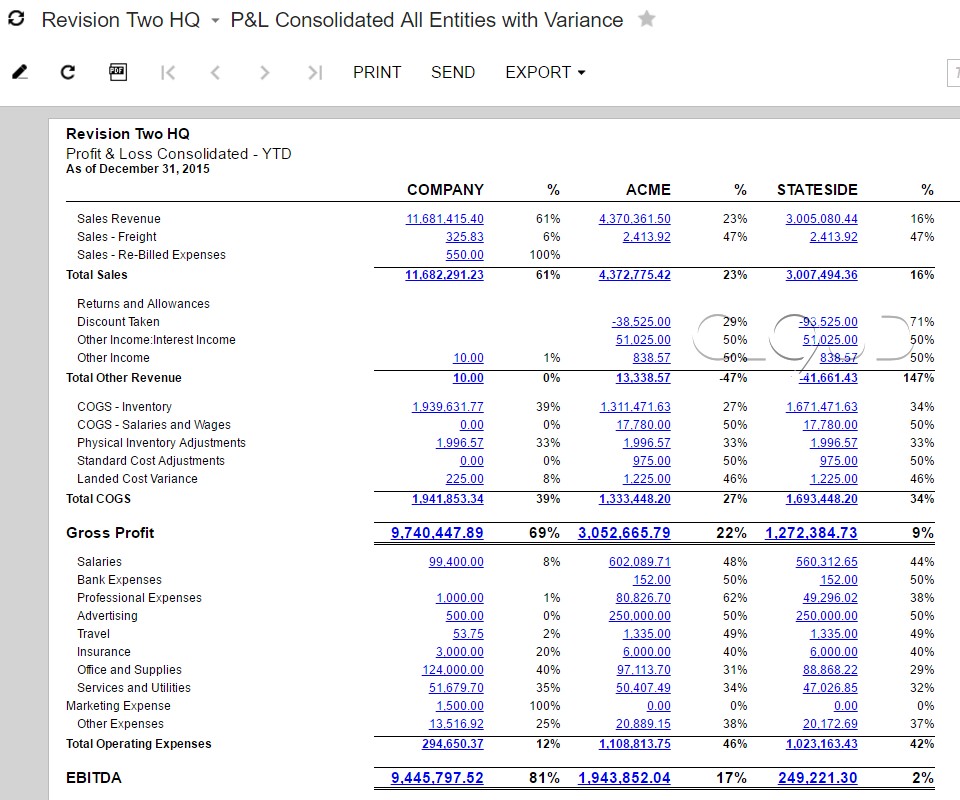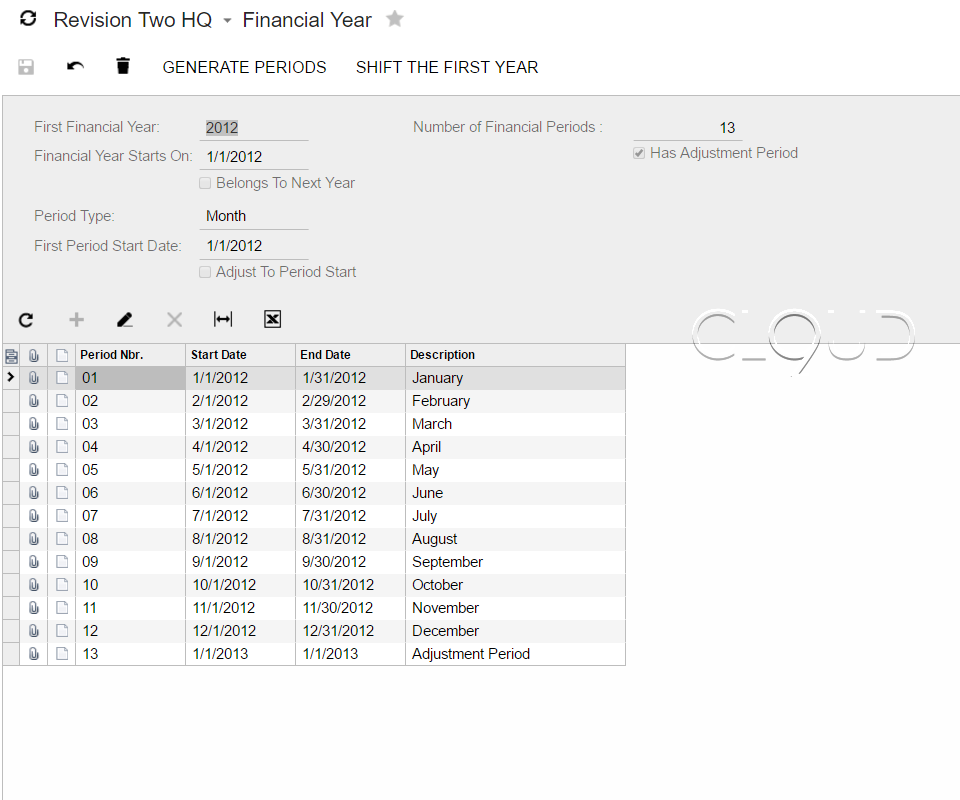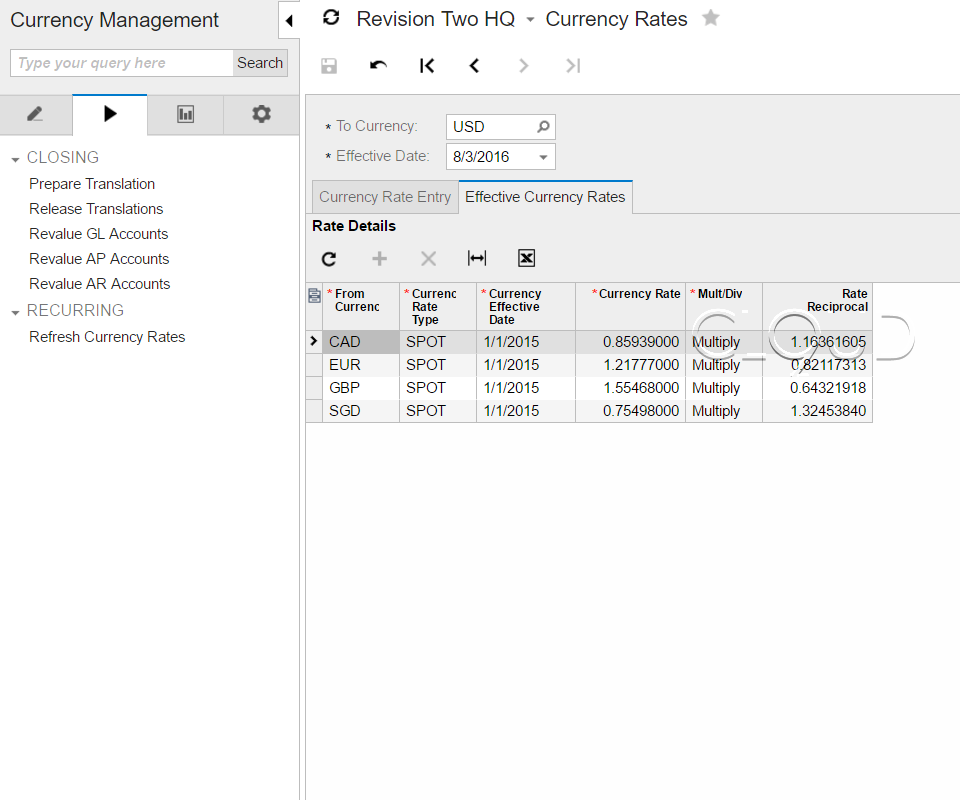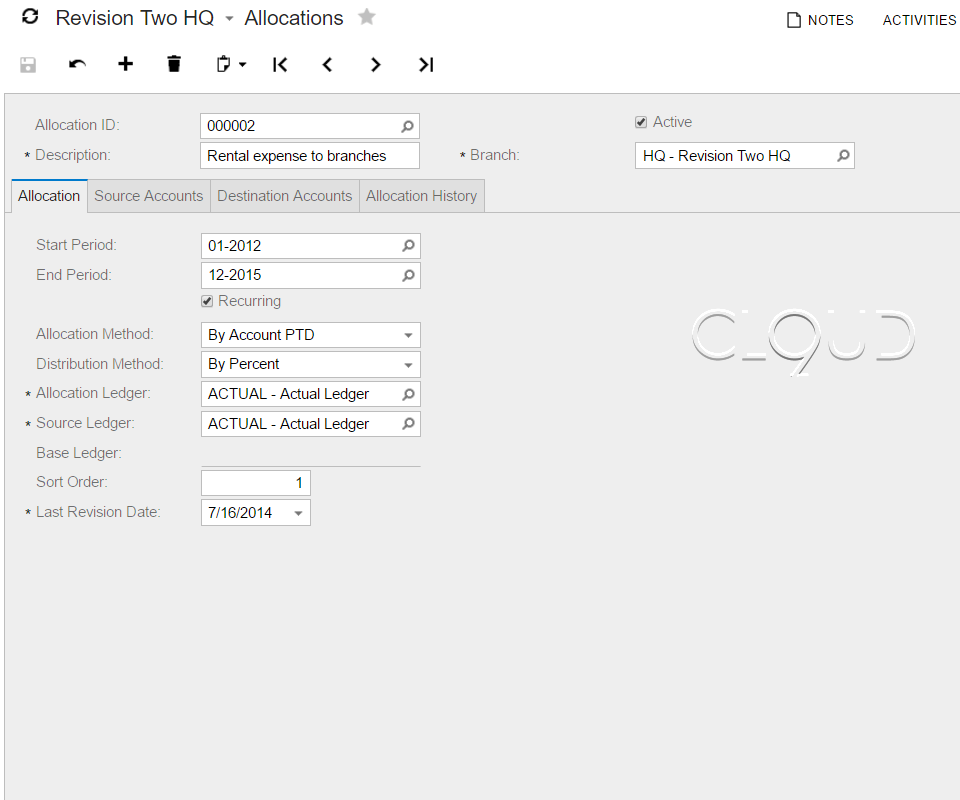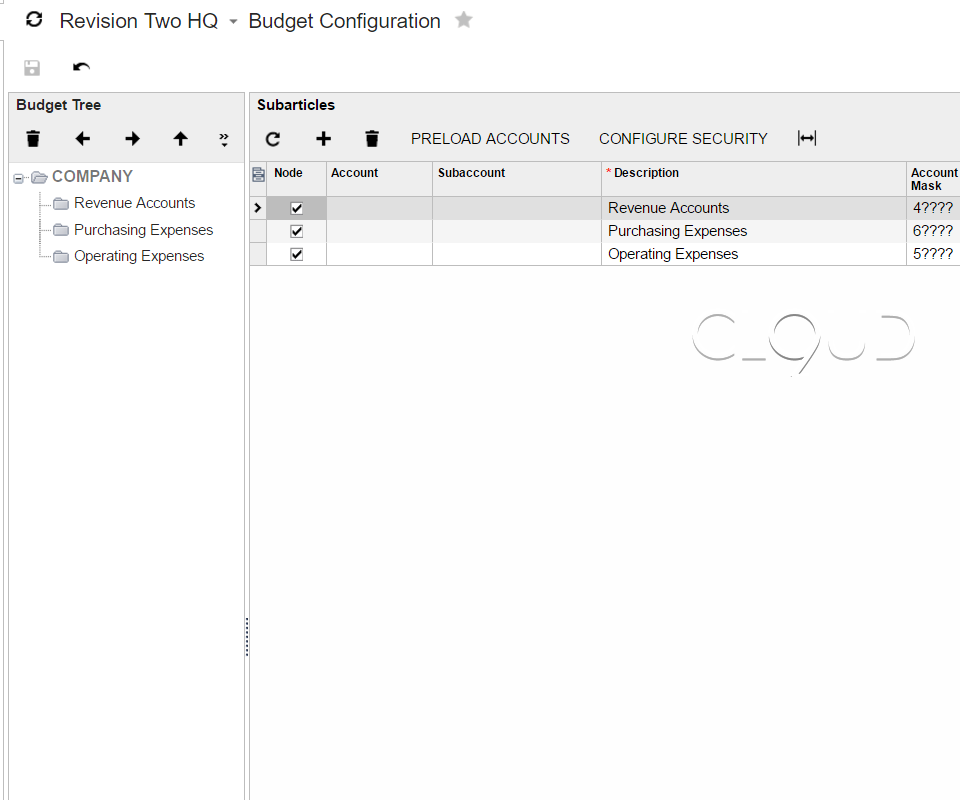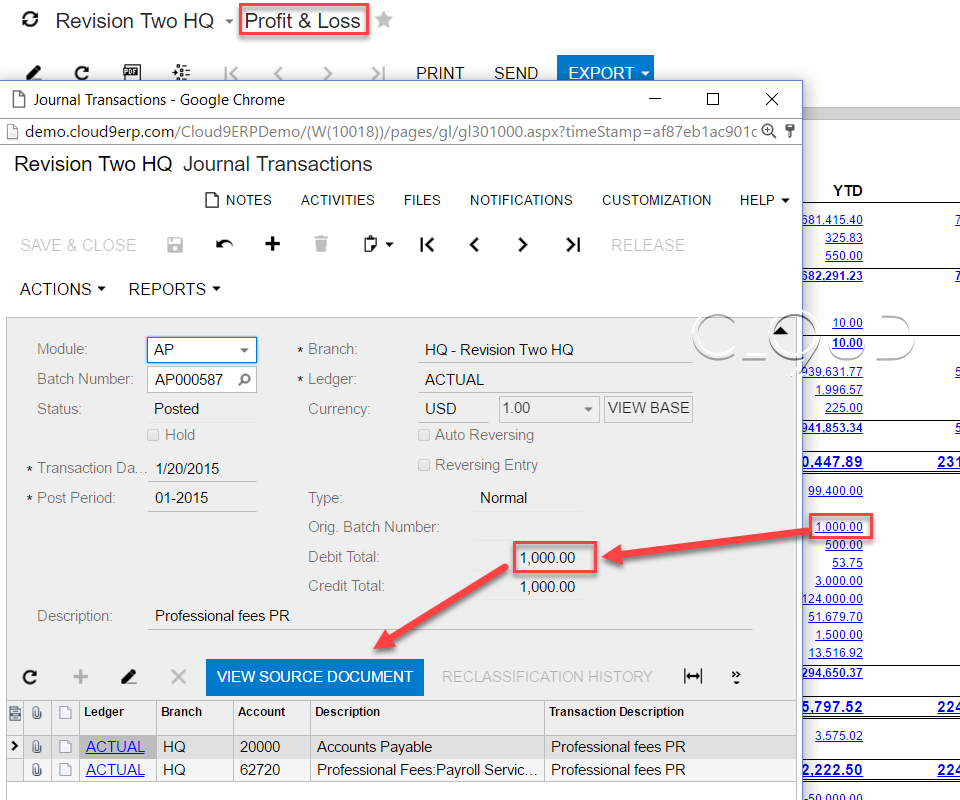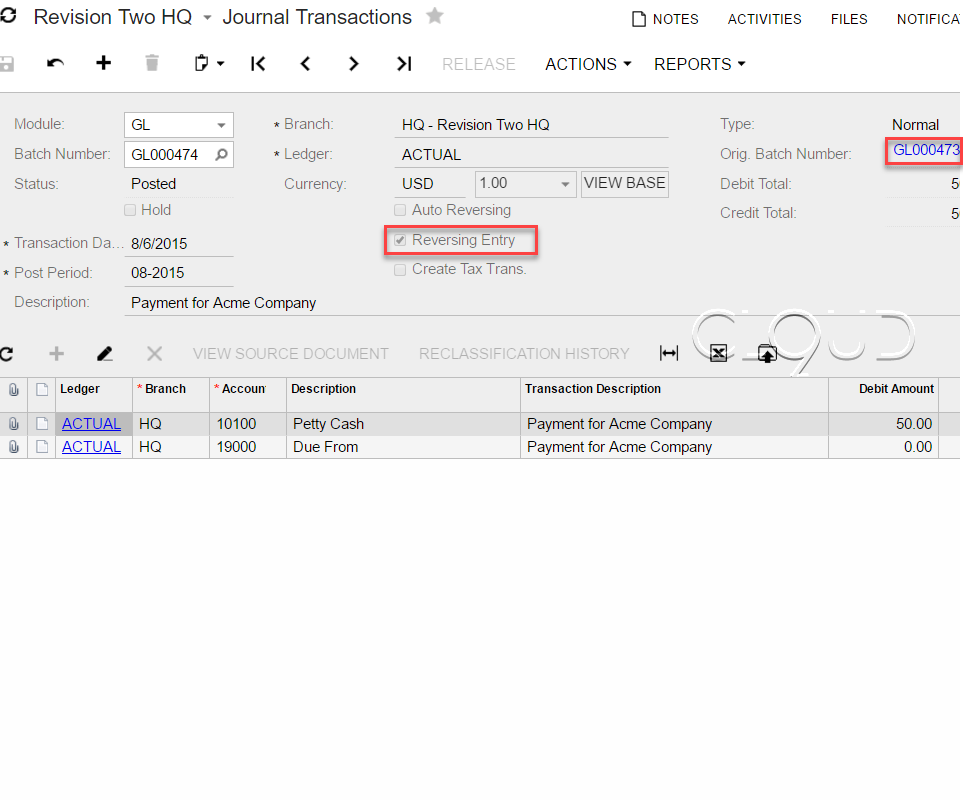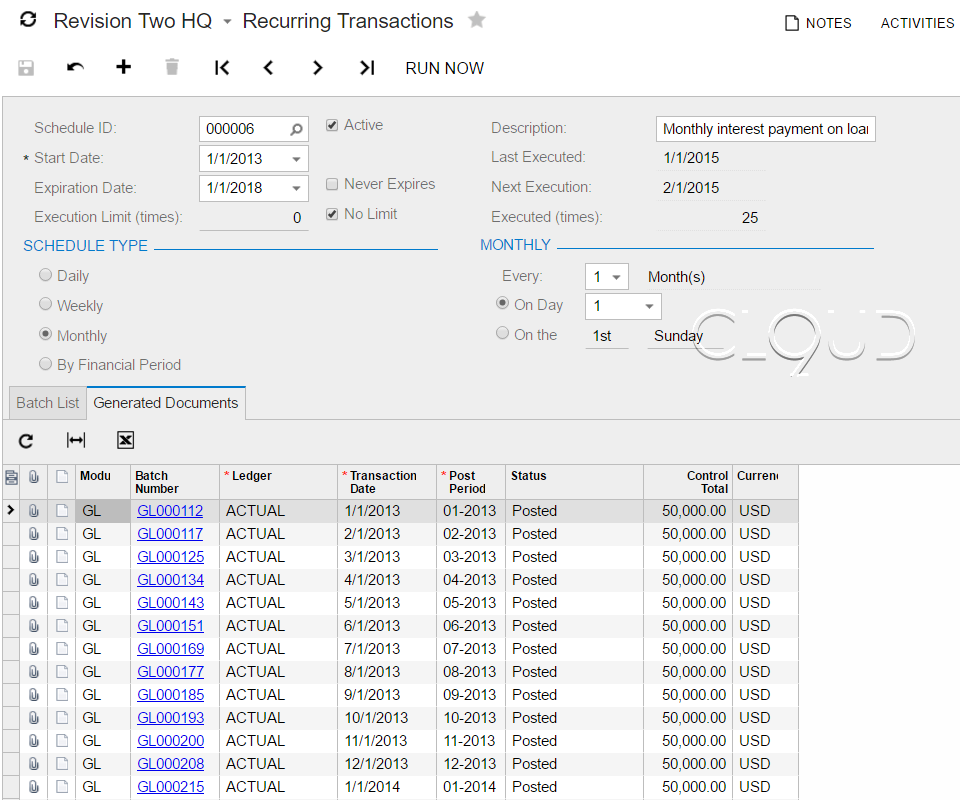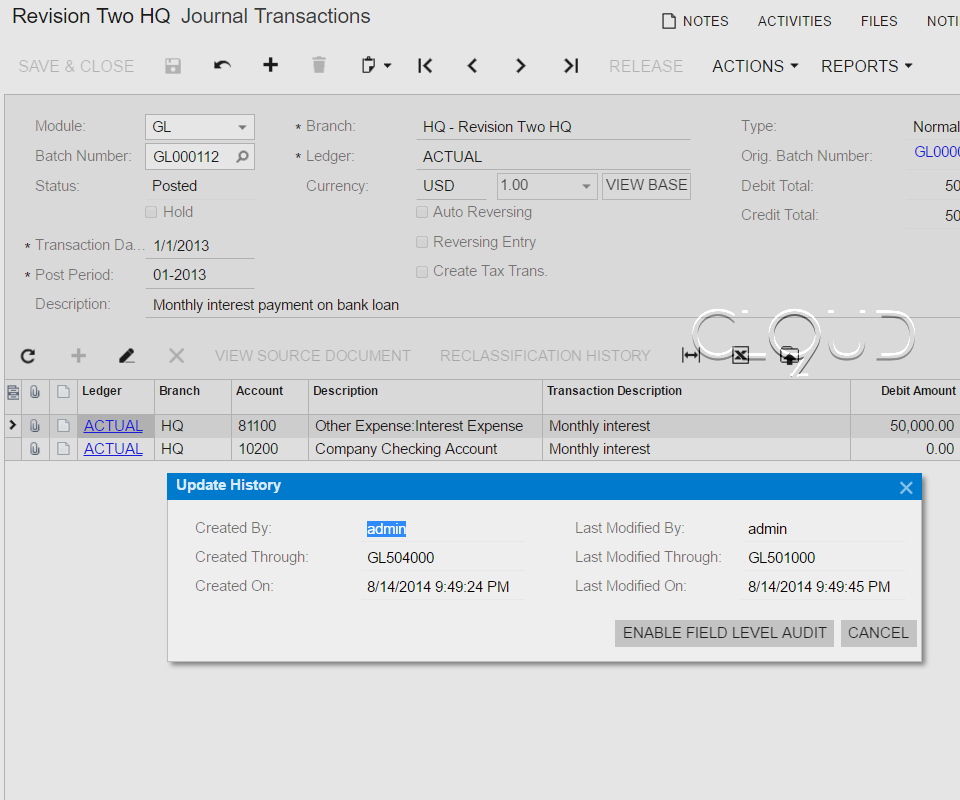General Ledger Software Module
The General Ledger software module (GL) provides a central repository for collecting and analyzing your financial information. Entries can be made directly into the General Ledger or they can be made from other application modules and then posted to the General Ledger software module.
Watch Acumatica General Ledger Demos:
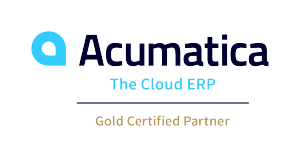
Get started with these helpful resources:
Highlighted Features
Flexible GL Account and Sub Account Structure
Acumatica allows you to define the structure of your General Ledger accounts and sub accounts. By defining segments, segment lengths, and segment values, you can meet your reporting and analytical requirements.
You can easily extend your account structure and change account values after your initial implementation. Changes are immediately reflected across the system.
Account and Sub Account Security
Acumatica allows you to control which users and roles can view and create transactions for specific General Ledger accounts and sub accounts in order to protect sensitive data and improve the accuracy of data entry. Use the “on-the-fly” entry feature to restrict the list of available sub accounts based on pre-defined combinations of segment values. This simplifies order entry for complex sub account structures.
GL Consolidation
Acumatica allows you to import financial data from different entities to create consolidated financial reporting and analysis. The import process works even if entities keep their books in different currencies or have different account and sub account structures. Corrections for minority interests, inter-company transfers, and other transactions are preserved inside the consolidating company ledger so they are not affected with subsequent consolidations.
Additional Features
Advanced Financial Reporting
Integrated reporting tools utilize the GL account and sub account structure so you can design financial statements that are tailored for your business based on the sub account segment structure and configured hierarchy. Reports can be published on the web or distributed through email in Excel or PDF formats.
On-The-Fly Sub Account Entry
Enable on-the-fly entry to automatically add new combinations of valid subaccount segments to the list of available sub-accounts during data entry. This feature allows you to maintain complex reporting requirements without having to pre-define and maintain complex segmented GL sub account structures.
Flexible Configuration of Financial Periods
Select monthly, bi-monthly, annual, or define a custom set of financial periods. Keep financial periods open as long as required to complete data entry and audit the balances. During data entry, the system will automatically suggest the financial period that corresponds to the transaction date and issue a warning if you override the period to protect against errors associated with multiple open periods.
Multiple Currencies Support
Activate multiple currency support to enter GL transactions in different currencies. The General Ledger Software maintains balances in the base currency and the foreign currency based on translation rules that you establish. See Currency Management for more information.
Automatic Allocation of GL Balances
Distribute GL account balances over multiple accounts and sub-accounts based on predefined allocation rules. Establish allocation rules based on percentages, quantities, statistical data, or proportionally to other GL account balances. You can create and run multiple subsequent allocation templates.
GL Accounts Budgeting and Budget Approval
Create an unlimited number of budget scenarios to maintain optimistic, pessimistic, and expected budgets. Establish access rights so teams can provide input into the budget process without viewing salaries or information from other subsidiaries. Once approved, budgets can be used for comparative analysis in financial statements and analysis reports as well as for monitoring expenditures.
Drill Down to Original Documents
Utilize a complete set of inquiry screens and reports to gain immediate access to GL balances. Drill down to the originating document from any inquiry screen or report, even if the transaction was created in another module.
Reversing and Auto-Reversing Entries
Reverse GL transactions with one button click. Create automatically reversing transactions that generate the reversing entry in the next financial period during the post procedure or when the financial period closes.
Recurring Transactions
Create recurring transactions based on specific schedules and time periods. Specify templates with expiration dates, execution limits, and custom execution schedules.
Audit Trails
The GL module provides a complete audit trail of all journal transactions. After a transaction is posted, you cannot delete or cancel the transaction – to correct mistakes, you must enter a correcting GL transaction to reverse the incorrect entry. The system keeps the details of all GL transactions, including the user who entered the transaction and the user who modified the record.The auditing process is simplified by having notes as well as supporting electronic documents attached directly to the transactions.
“We decided to move to Acumatica ERP in Jan 2015. Our partner is Cloud 9 ERP Solutions and we have been very happy with them. They have walked us through the implementation process, dug in and found solutions when we needed to do something a little differently and gone to bat for us when we needed help. Overall, we couldn’t be happier with our move to Acumatica and working with Cloud 9 ERP Solutions.”
Choosing the right ERP Software can be a daunting task. Cloud 9 ERP Solutions can help.

